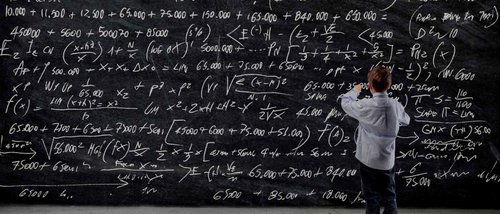ImBillT
Well-known member
- Joined
- Oct 29, 2018
- Messages
- 3,821
There appears to be some dissatisfaction with draw odds and fairness and I somewhat expect that to be based largely on misconception. If I did something wrong, the explanation of the math is at the bottom. I ran the match on a few different scenarios just to check things out.
10% draw odds.
The odds I will draw a 10% hunt at least once in ten years is 65%. 35% of people doing this will fail to draw at least once in ten years. The odds of drawing at least once in twenty years is 88%, which I THINK mirrors the odds of drawing at least twice in ten years. Which adds up, because a guy who drew twice has to be the reason for a guy only drawing once, and the pool was the same every time, then both of those have to add up. So, over 20 years 88% of applicants will have drawn at least twice, and 12% will have drawn once or not at all.
The take away:
10yrs- 65% odds
20yrs- 88% odds
Twice in 20yrs 77.4%
Thrice in 30yrs 87.8%
1% lots of folks think that if they apply for a 1% odds hunt for fifty years that they have a fifty fifty chance...it’s 39.5% Still not the worst news ever.
10yrs- 9.6%
20yrs- 18.6%
50yrs- 39.5%
.1% Somebody has to win right?
10yrs-1%
20yrs-2%
50yrs-4.9%
I guess that’s about what most people probably assumed.
Well, all my species in non-res states adds up to 18 applications. If I assume that my first choice is going to have 1% odds and I’m going to hunt for twenty more years, what are the odds that I draw one of those hunts at least once? That’s 360 apps, so 97.3%.
.1% over 360 apps-30.2%
Hope that helps.
It’s been quite a few years since I took a statistics class, but I decided to do a little math, and I think I did it correctly. The probability that something will happen at least once over a span of years should be 1-(the probability that it won’t happen)^nth where n is the number of years. The probability that it won’t happen is the number of negative outcomes decided by the number of total outcomes. So if something has a probability of 1/10, then the probability of it not happening is 9/10, so the probability that something that occurs 1/10 of the time will occur at least once in ten trials is (9/10)^10 or 65%. Where I really am not certain is trying to do it at least twice. I THINK that would be the probability of it not happening at least once to the power of how many times you want it to occur, so at least twice in 10yrs would be 12.2%, at least thrice would be 4.2%
10% draw odds.
The odds I will draw a 10% hunt at least once in ten years is 65%. 35% of people doing this will fail to draw at least once in ten years. The odds of drawing at least once in twenty years is 88%, which I THINK mirrors the odds of drawing at least twice in ten years. Which adds up, because a guy who drew twice has to be the reason for a guy only drawing once, and the pool was the same every time, then both of those have to add up. So, over 20 years 88% of applicants will have drawn at least twice, and 12% will have drawn once or not at all.
The take away:
10yrs- 65% odds
20yrs- 88% odds
Twice in 20yrs 77.4%
Thrice in 30yrs 87.8%
1% lots of folks think that if they apply for a 1% odds hunt for fifty years that they have a fifty fifty chance...it’s 39.5% Still not the worst news ever.
10yrs- 9.6%
20yrs- 18.6%
50yrs- 39.5%
.1% Somebody has to win right?
10yrs-1%
20yrs-2%
50yrs-4.9%
I guess that’s about what most people probably assumed.
Well, all my species in non-res states adds up to 18 applications. If I assume that my first choice is going to have 1% odds and I’m going to hunt for twenty more years, what are the odds that I draw one of those hunts at least once? That’s 360 apps, so 97.3%.
.1% over 360 apps-30.2%
Hope that helps.
It’s been quite a few years since I took a statistics class, but I decided to do a little math, and I think I did it correctly. The probability that something will happen at least once over a span of years should be 1-(the probability that it won’t happen)^nth where n is the number of years. The probability that it won’t happen is the number of negative outcomes decided by the number of total outcomes. So if something has a probability of 1/10, then the probability of it not happening is 9/10, so the probability that something that occurs 1/10 of the time will occur at least once in ten trials is (9/10)^10 or 65%. Where I really am not certain is trying to do it at least twice. I THINK that would be the probability of it not happening at least once to the power of how many times you want it to occur, so at least twice in 10yrs would be 12.2%, at least thrice would be 4.2%
Last edited:





